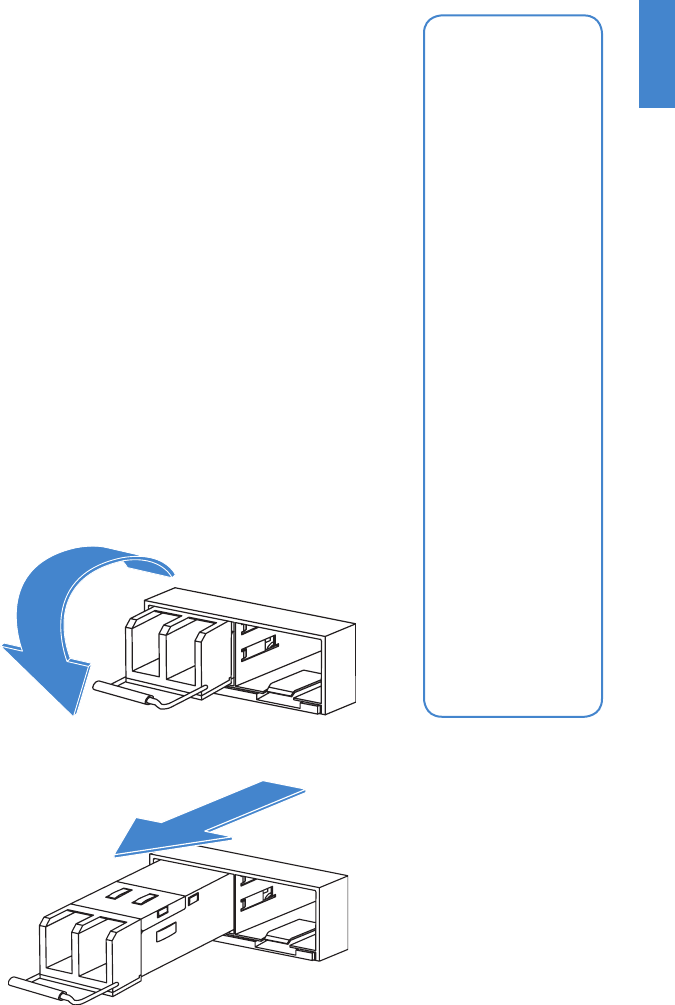
13
5. Press the transceiver firmly into the cage socket with
your thumb.
6. Verify that the transceiver is latched correctly by grasping
the sides of the transceiver and trying to pull it out
without lowering the extraction lever.
If the transceiver cannot be removed, it is installed and
latched correctly.
If the transceiver can be removed, reinsert it and press
harder with your thumb.
If necessary, repeat this process until the transceiver is
securely latched into the cage socket.
To remove the SFP transceivers
1. Ensure that you are properly grounded.
2. If applicable, disconnect the fiber-optic cable from the
transceiver connector and install a clean dust plug in the
transceiver’s optical bores.
3. Pull the extraction lever out and down to eject the
transceiver. If you are unable to use your finger to open
the lever, use a small flat-head screwdriver or other
similar tool to open the lever.
4. Hold the sides of the transceiver and carefully pull it away
from the cage socket.
5. Replace the cap on the SFP cage socket and place the
removed SFP transceiver into an antistatic bag.
Caution: Do not
force the SFP
transceivers into
the cage slots.
If the transceiver
does not easily
slide in and click
into place, it may
not be aligned
correctly or may
be upside down.
If this happens,
remove the SFP
transceiver, realign
it or rotate it and
slide it in again.
Note: Follow
proper fiber-
optic handling
procedures when
installing and
removing
SFP transceivers
to ensure the
devices remain
clean and are not
damaged.


















